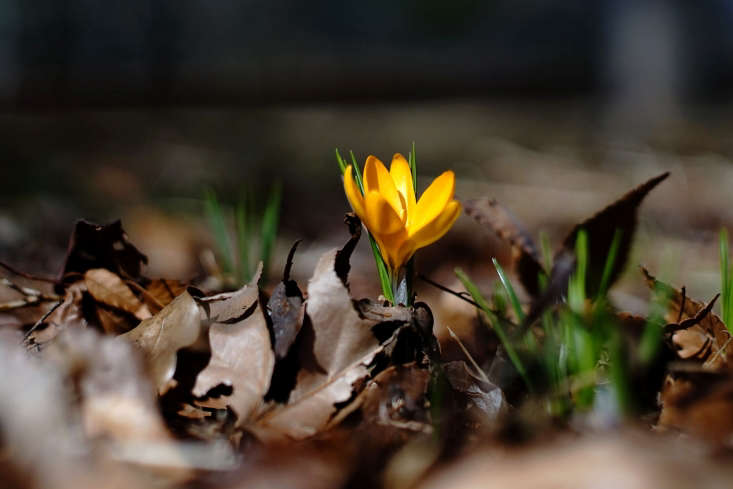Crocus, Crocus: “The Early Riser”
What will heaven look like when we get there? Emily Dickinson predicted a springtime Resurrection, with “the feet of people walking home” amid clumps of crocuses. We’ll be in sandals.



We love the autumn version–Crocus sativus–too. Named for the ancient Hebrew word for “saffron,” Crocus sativus produces the spice; each flower has the red threadlike stigmas you pay for so dearly at the market (it takes nearly 4,000 flowers to produce an ounce of saffron).

Cheat Sheet:
- Perennial: Grows from bulb-like corms.
- Hardy: Zones 6-8 (and 9 in the West).
- Pair it with plants that can live in snow, such as winter jasmine or snowdrops.
Keep It Alive:
- If overeager buds appear in January, cover with milk cartons to protect from cold.
- Partial to full sun.
- Water in fall if beds are very dry.

If you want to harvest your own saffron, pick Crocus sativus flowers on a sunny day and then let the stigmas dry before using them in recipes.

N.B.: For more about spring flowers, our Garden Design 101 guides including our primer on Bulbs & Tubers 101 can help answer your questions:
- Looking to plant bulbs? See Tulips 101, Daffodils 101, and Grape Hyacinths 101.
- For something to complement crocuses in an arrangement, try Hellebore 101 and Ranunculus 101.
- Forcing bulbs? See 10 Easy Pieces: Bulb Vases.
Finally, get more ideas on how to successfully plant, grow, and care for crocus with our Crocus: A Field Guide.
Interested in other bulbs and tubers for your garden or indoor space? Get more ideas on how to plant, grow, and care for various bulbs and tubers with our Bulbs & Tubers: A Field Guide.
Finally, get more ideas on how to plant, grow, and care for various perennial plants with our Perennials: A Field Guide.








Have a Question or Comment About This Post?
Join the conversation